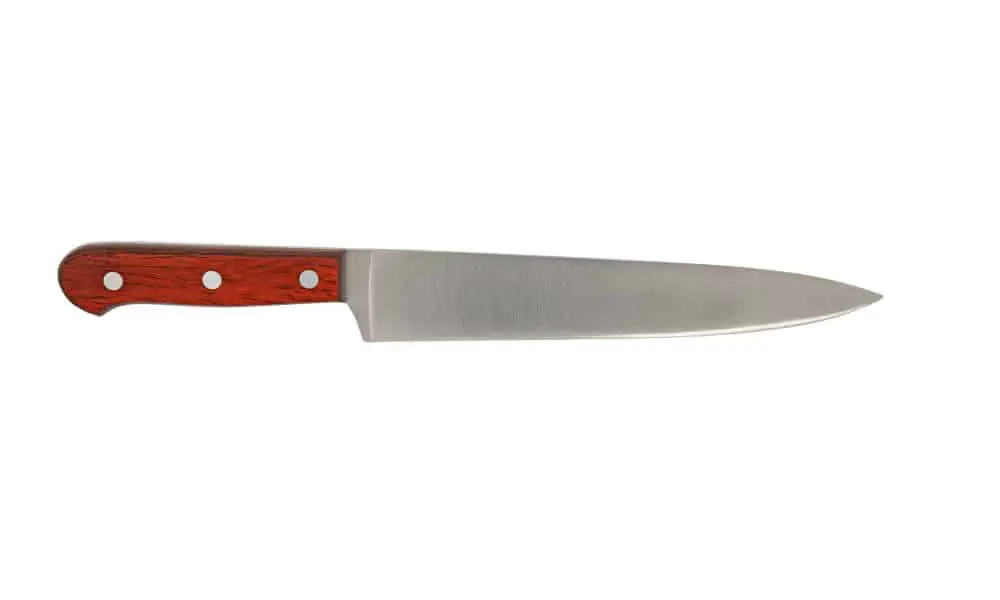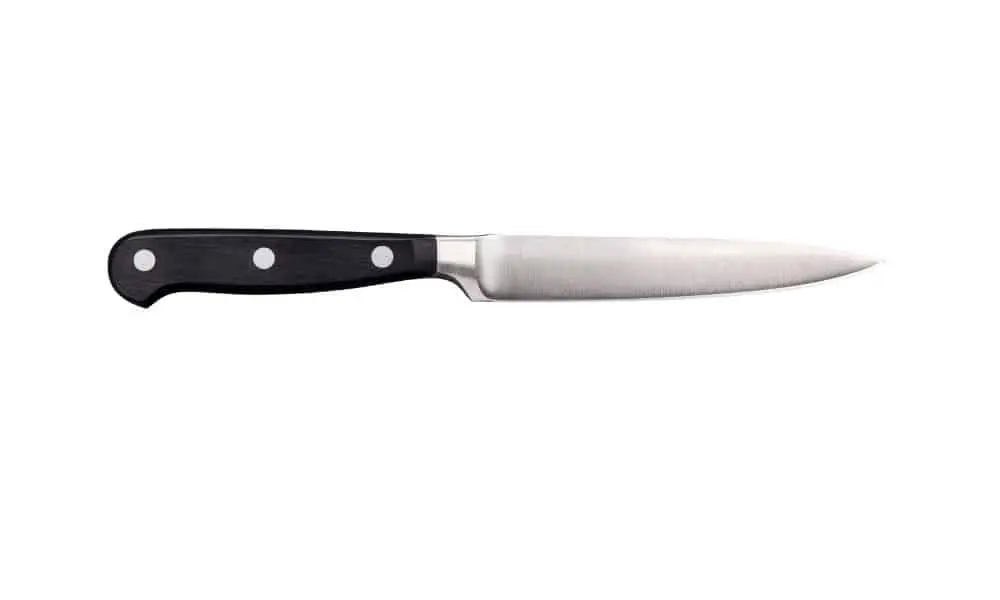There are certain sensations in life that just make your skin crawl or that get on your nerves more than anything else. For some it’s nails on a blackboard, for others it’s when your kitchen knife handle gets sticky.
At times, it’s like no matter how much you wash them, that stickiness never really leaves. So, if you are at your wit’s end wondering why your kitchen knife handle is getting sticky you’re in the right place.
Depending on the material of the handle and how it’s been maintained there may be several reasons causing your grief. Here we go through why your kitchen knife handle is sticky, covering every handle material and how you can fix it.
Why Is My Kitchen Knife Handle Sticky?
There are several reasons your kitchen knife handle may be sticky. Some causes can affect all different types of knife handles, but some others affect just wood, some affect just plastic, and some just synthetic.
One of the most common causes of sticky handles is due to a buildup of grease or oil which have partially been absorbed by the knife handle. But, it’s not just grease or oil that can cause the stickiness, it can be any liquid that has come in contact with the handle and has set or been absorbed.
In order to test if this is the culprit causing your kitchen knife handles to get sticky, then we recommend a thorough cleaning process:
- First, try using a concentrated dishwashing liquid. Dishwashing liquid is great for removing oil and grease. Generously apply a thin layer of dishwashing liquid over the entire knife handle and leave for 5 minutes.
- Wash the handle in warm water and ensure to remove all the dishwashing liquid.
- Once the handle is fully dry, use rubbing alcohol on the handle. Rinse, and pat dry.
- If the stickiness is persisting then it’s time to break out the big guns. Mix a heap of baking soda with a few tablespoons of water until it becomes a thick paste. Apply a generous layer around the entire handle and let sit for 5 minutes. Rinse off the paste and dry the knife.
If the knife handle is still sticky, then it may be due to decomposition and you may have to look at replacing the handle, or using a wrap to cover the handle creating a barrier between your hand and the stickiness.
Wooden Knife Handle Getting Sticky?

Wooden knife handles can be incredibly satisfying to use and overall have good durability. Most often you’ll find wooden handles on a Japanese knife, like a Santoku knife, a Yanagiba, or a Deba knife etc.
But, a wooden handle has one flaw: the wood too easily absorbs moisture. This is usually why wood handles are partially treated with resin or epoxy, which help fill the pores and protects the handle from decay.
If your wood handle does come in contact with any oily, juicy, or syrup-like substance, then it can seep into the handle. Even after getting washed, some grease may get left behind and become sticky.
In most cases though you’ll be able to wash it out with warm water and dishwashing liquid. If it is particularly greasy then you may wish to try using baking soda.
To protect your wooden knife handle from getting sticky you can use a little bit of mineral oil to saturate the handle’s pores. This helps prevent water and other liquids from being absorbed, which could affect the wood or cause stickiness. After you wash and dry the knife off, rub it with a few drops of mineral oil until it’s fully absorbed for a nice finish. This oil can also be used to maintain top-quality wooden cutting boards.
Note: You shouldn’t use mineral oil on any other kitchen knife handle material. A handle made from rubber, silicone, or plastic can deteriorate if rubbed with oil.
Plastic Knife Handle Getting Sticky ?

Plastic knife handles usually don’t have a problem at repelling oils, juices, and liquids. But, if a plastic or rubber kitchen knife has been exposed to high temperatures, the stickiness could be the result of thermal degradation.
When rubber or plastic is left in a very hot environment, like left next to the stove or oven, on a pot or pan, or even potentially in a very hot room in the sun they start to degrade. A deteriorating kitchen knife handle can be extremely sticky, as the plastic deforms and mixes with the glue or epoxy holding the whole knife together.
If your plastic knife is getting sticky and you suspect it’s been melted then you could try wrapping the handle in thin cloth or plastic wrap. Otherwise it may be time to look at a new knife.
Synthetic Knife Handle Getting Sticky?

Synthetic knife handles are one of the most popular materials for general purpose kitchen knives. They provide a good level of comfort, are generally resistant to substances, and don’t degrade very easily.
However, if your synthetic knife handle is still sticky after you’ve already tried washing it thoroughly with dishwashing liquid and used baking soda then you can look at using more serious stuff. Acetone or rubbing alcohol can be used to really rid any external stickiness and shouldn’t degrade the synthetic knife handle.
If your synthetic knife handle is STILL sticky after then it’s likely the handle has degraded and the stickiness is the glue or resin holding it together. Your only options here are to get some kind or wrap, or look for a replacement handle or knife!
What About A Stainless Steel Handle?

Stainless steel, carbon steel, and bone handles will only get sticky from an external source, like grease, meat juices, sugar, etc. If you have a sticky steel or bone handle then you should be able to simply soak it in warm soapy water and wash it thoroughly to remove the stickiness.
How To Stop Kitchen Knife Handle From Getting Sticky
Taking care of your knives, storing them correctly, and washing them properly can help maintain them for a lifetime, and incidentally stop them from getting sticky!
Wash the blade and handle after every use using warm soapy water and a cloth or sponge. Dry the knife and store it in a sheath, or place it isolated in a drawer. Somewhere where it can’t clink and clang with all the other cutlery and kitchen utensils.
If your handle does end up covered in any oils, juices, greases or sugary then just give it an extra thorough wash – particularly if you’ve been using your knife to cut raw chicken.
Submerge the handle in soapy hot water and wash it thoroughly. Rinse the handle, then use a sponge to cover it with baking soda. If there is any sticky residue, soak the handle in a solution of 4 tbsp baking soda to 1/4 cup water. If it’s still sticky try use rubbing alcohol on cloth and give it a good scrub.
Wrap-Up
The usual suspect is normally something external, which can be washed off with either dishwashing liquid and water or baking soda and a bit of effort. You may even be able to use something more heavy duty depending on what type of material your handle is made of.
In the end, sometimes you can’t help it. If your kitchen knife handle is glue-like sticky, and cleaning it using the above-detailed methods isn’t working, it might be decomposing. In this case, you’re better off getting rid of the knife and replacing it with a new one or looking at upgrading your arsenal.

